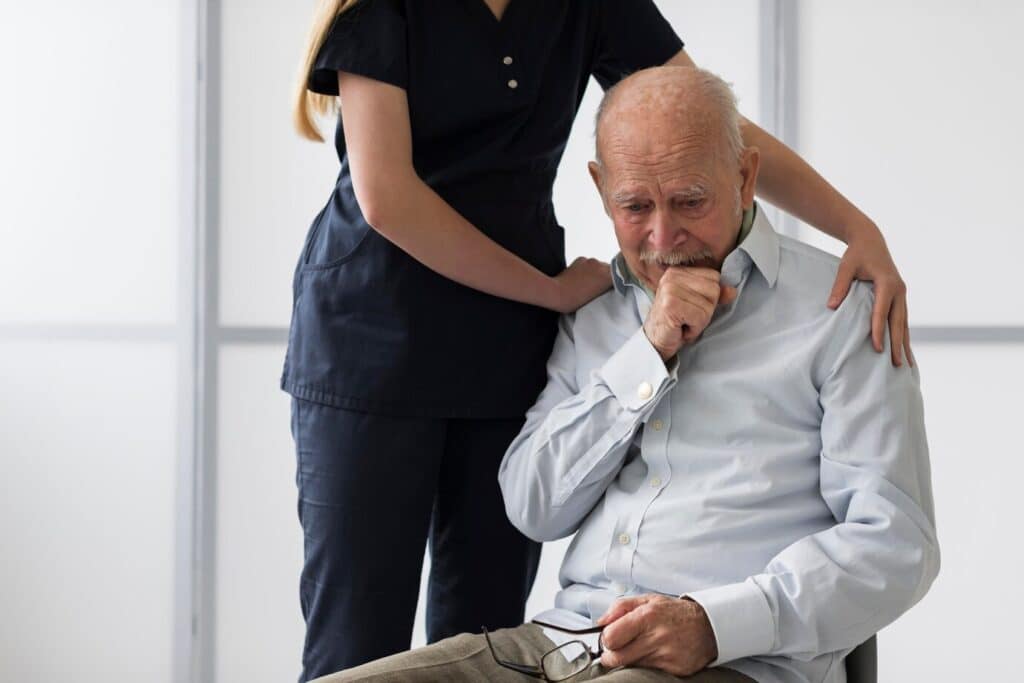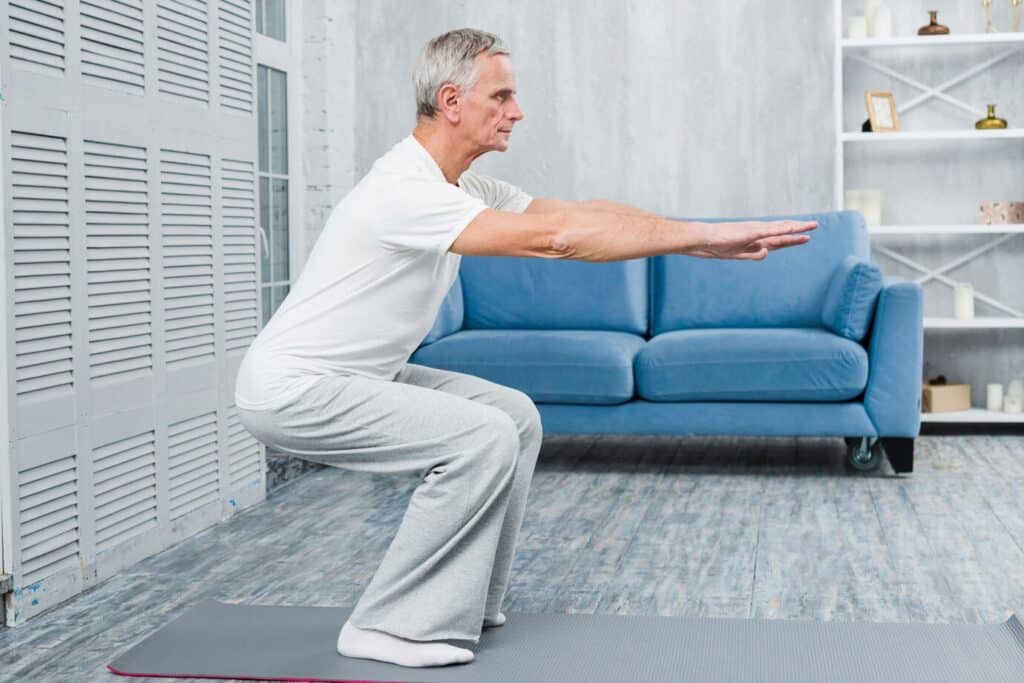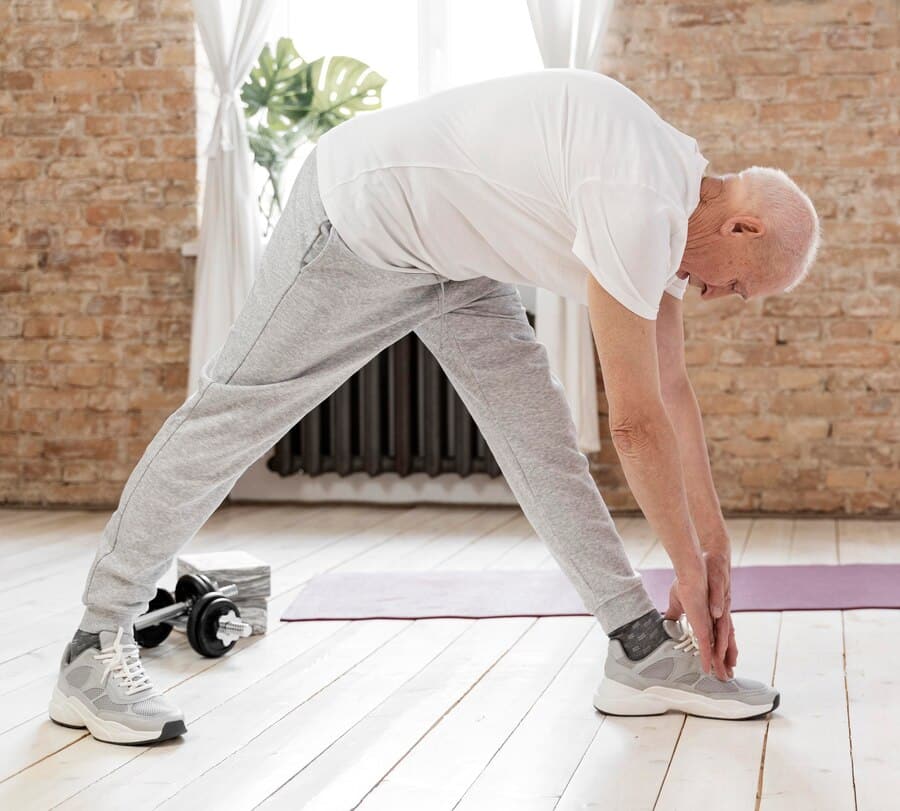Impact of Chronic Pain in Seniors On Their Quality of Life
Chronic pain in seniors is more than a medical condition—it’s a life-altering challenge that affects physical health, emotional well-being, and day-to-day function. Many older adults endure ongoing discomfort, often believing it’s a normal part of aging, when in reality, this belief can prevent them from seeking proper help.
Understanding and managing this pain requires compassion, strategy, and a holistic approach. At Westmont of Chico, we focus on empowering seniors to live comfortably and actively, even with persistent pain. By learning about the causes, effects, and solutions for chronic pain in seniors, individuals and families can take meaningful steps toward better health and quality of life.
Understanding Chronic Pain in Seniors
Chronic pain in seniors is typically defined as pain lasting longer than three months. It can stem from arthritis, nerve damage, injuries, or conditions such as osteoporosis and Parkinson’s disease. While the prevalence of chronic pain in older adults is high, it’s crucial not to dismiss it as an inevitable part of aging.
A concerning factor is that many elderly people believe that pain is normal for their age, which can delay diagnosis and treatment. Education and awareness are the first steps toward combating this mindset. Addressing both the physical and emotional components is key to effective chronic pain management in the elderly.
For a deeper dive into personal strategies for seniors, visit Practical Pain Management Strategies in Elderly Care.
Common Causes and Hidden Pain Sources
Some pain sources in seniors can be easily overlooked. For instance, unexplained pain in the elderly may be linked to long-term conditions, medication side effects, or even depression. In some cases, seniors may not clearly express where or how much it hurts, making it harder for caregivers to assess the problem.
Another critical point is how older adults with Parkinson’s disease exhibit increased sensitivity to pain and changes in how they experience it. According to the National Institute on Aging, understanding each individual’s experience is essential to forming the right care plan.
Physical Limitations and Reduced Mobility
When chronic pain in seniors isn’t properly addressed, physical limitations increase. This can limit independence, reduce the desire to move, and contribute to muscle weakness or further injury.
- Try assistive devices like walkers or orthopedic shoes
- Modify exercises to include low-impact activities such as aquatic therapy
- Use pain tracking journals to identify triggers and monitor progress
- Work with physical therapists for personalized plans
Explore senior physical therapy tips that make a difference in mobility and strength.
The Psychological Toll of Chronic Pain
Chronic pain management in the elderly must also address emotional consequences. Living with pain can lead to anxiety, depression, and cognitive strain. Many older adults begin to withdraw from social interaction, believing no one understands their struggle.
It’s important to realize that unexplained pain in the elderly can sometimes be linked to emotional distress or loneliness. As pain increases, the ability to focus and enjoy hobbies diminishes, making the cycle harder to break.
Mindfulness exercises, therapy, and group support can help. Learn more about overcoming depression and anxiety in senior years through connectedness and wellness practices.
Comprehensive Pain Relief Strategies
An effective plan for chronic pain management in the elderly involves both medical and non-medical options. Working closely with healthcare professionals ensures you receive care tailored to your unique health profile.
Proven strategies include:
- Use of non-opioid medications and anti-inflammatories
- Incorporation of holistic therapies like tai chi, acupuncture, or guided meditation
- Access to regular mental health counseling
- Community-based wellness classes to improve mobility and mood
Don’t overlook planning tools, either. Knowing your legal rights and documents can empower seniors to make informed decisions about their care.
Family and Community Support Systems
Support systems are a vital part of managing chronic pain in seniors. Families who stay involved help older adults maintain routines, stay active, and feel emotionally supported. This involvement also allows for early recognition of new symptoms, especially those tied to unexplained pain in the elderly.
Strong community connections matter too. Encouraging activities like group meals, hobby classes, or support circles boost emotional wellness. Visit Smart Designs for Senior Living to see how spaces can be built for community engagement.
Table: Family and Community Engagement Benefits
| Support Type | Activities | Benefits |
| Family Involvement | Weekly visits, daily calls | Reduces isolation, monitors symptoms |
| Peer Support Groups | Chronic pain discussion circles | Validates feelings, shares coping tools |
| Community Programs | Exercise classes, book clubs | Promotes social wellness and purpose |
| Tech for Connection | Video chats, apps for reminders | Keeps seniors informed and engaged |
Technology’s Role in Senior Pain Management
Modern technology offers remarkable tools to help seniors manage their pain. From digital tracking devices to telehealth consultations, technology gives both seniors and caregivers real-time information and immediate access to care.
Wearable devices track movement and sleep, revealing insights into how pain affects daily life. Telemedicine also allows quick, efficient follow-ups without the need to travel. Seniors with mobility issues especially benefit from these tools.
For more on emerging solutions, check out this Cleveland Clinic guide to pain tech.
Challenging the Stigma: Pain Is Not Inevitable
One of the biggest myths is that many elderly people believe that pain is normal for their age. This belief often leads to underreporting and missed opportunities for relief. Education is crucial to challenge this mindset.
By highlighting the prevalence of chronic pain in older adults, communities and caregivers can start earlier interventions and improve long-term outcomes. Resources from organizations like the American Chronic Pain Association can guide seniors and families in seeking help.
A Renewed Path to Comfort and Confidence
Living with chronic pain in seniors doesn’t mean giving up on enjoyment or independence. With proper support, advanced strategies, and compassionate care, seniors can reclaim their days and rediscover fulfillment.
At Westmont of Chico, we’re dedicated to providing resources, care, and connection that help older adults live fully, even with pain. To learn more or schedule a tour, visit our website or book a tour here. You can also call us directly at 530-767-3886 to speak with our caring team.
Discover the level of care you or your family member requires. What Level of Care Do You Need?
Frequently Asked Questions
What is the most common cause of chronic pain in the elderly?
The most common cause of chronic pain in the elderly is osteoarthritis, a degenerative joint disease that worsens with age. It leads to inflammation, stiffness, and discomfort in joints such as the knees, hips, and hands. Other contributors include nerve damage, osteoporosis, and past injuries. Chronic conditions like spinal stenosis or diabetic neuropathy also frequently cause long-term pain in older adults.
What is the best cure for chronic pain?
There is no one-size-fits-all cure for chronic pain, but the best approach typically involves a combination of therapies. This may include medications, physical therapy, cognitive behavioral therapy, and lifestyle changes like exercise and diet. In some cases, alternative treatments like acupuncture or massage therapy may provide relief. The goal is to manage pain effectively and improve overall quality of life.
What are the pain management techniques for elderly people?
Pain management for seniors often includes medications, physical therapy, and gentle exercise. Techniques such as heat or cold therapy, relaxation methods, and acupuncture can also help. Non-drug therapies like guided imagery or mindfulness meditation are gaining popularity for their low-risk benefits. Personalized care plans are essential to balance pain relief with safety, especially in older adults with multiple health conditions.
What are the top 3 chronic conditions in older adults?
The top three chronic conditions affecting older adults are arthritis, heart disease, and diabetes. Arthritis, especially osteoarthritis, is the most prevalent and causes joint pain and stiffness. Heart disease, including conditions like hypertension and congestive heart failure, can severely impact mobility and independence. Diabetes can lead to complications like neuropathy and kidney issues, making long-term management essential.










